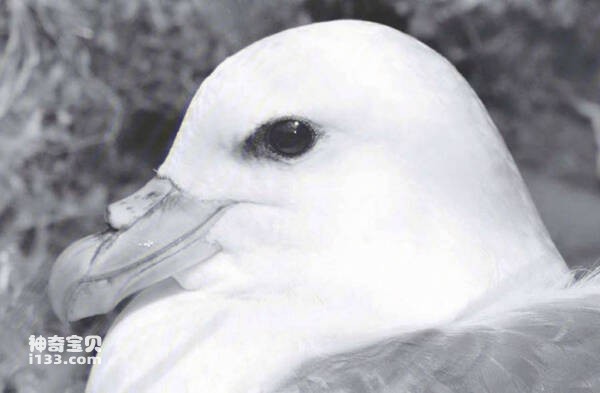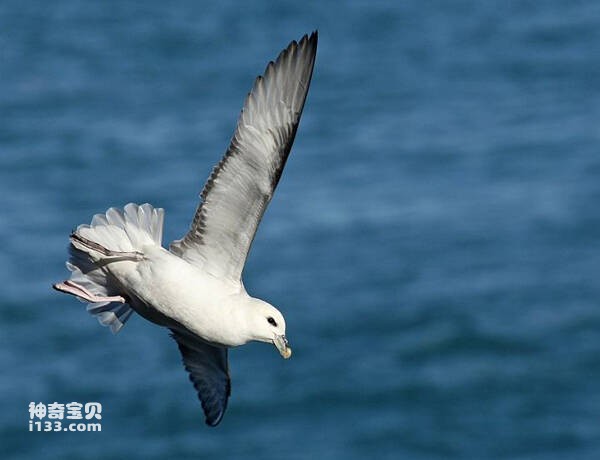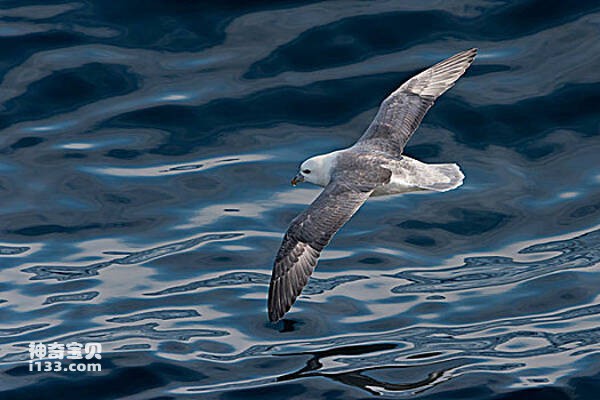Fulmarus glacialis
IUCN
LCBasic Information
Scientific classification
- name:Fulmarus glacialis
- Scientific Name:Fulmarus glacialis,Northern Fulmar,Fulmar
- Outline:Waterfowl
- Family:
Vital signs
- length:45-48CM
- Weight:665-880g
- lifetime:No textual research information is available
Feature
It looks like a gull in appearance and color, with a white head, neck, and underbody, and a black spot before the eyes
Distribution and Habitat
Country of origin: Canada, China, Denmark, Faroe Islands, France, Germany, Greenland, Iceland, Ireland, Japan, Mexico, Netherlands, Norway, Portugal, Puerto Rico, Russian Federation (Central Asia - Travellers, East Asia, Europe), Saint Pierre and Miquelon, Svalbard and Jan Mayen, Sweden, United Kingdom, United States.
Travellers: Antigua and Barbuda, Bahamas, Belgium, Czech Republic, Finland, Morocco, Poland, Slovakia, Slovenia, Spain, United States Virgin Islands.
The Shearwater is a typical Marine bird, and it never goes to land except for breeding on islands. It is mostly distributed in cold water, and mainly lives on cliffs and rocks during breeding, occasionally penetrating into 1 km of flat land. They sometimes live near human settlements and even inhabit houses in coastal towns.
Appearance
Storm shearwaters are male and female alike. The mouth is flat on the side, medium in length, and the tip of the upper mouth bends downward into a hook-like shape, relatively sharp, and the mouth is composed of several horny pieces with clear boundaries. The nostrils are tubular and long, the left and right nasal tubes are joined together, but the middle is separated, and the nasal tubes are located at the base of the upper mouth along the midline of the rostral peak. The wings are broad and long, with a pointed apex. The primary feathers are 11, the first being the longest. Round tail, 14 tail feathers, medium length. The feet are short and strong, the tarsus is flat, the front and back edges are sharp, the tarsus is reticulated scale, and the length of the tarsus is slightly shorter than that of the middle toe. The toes are thinner, the outer toes are as long as the middle toes, the hind toes are present, but shorter, and the first 3 toes are fully webbed. The claws are narrow and sh
Details
Fulmarus glacialis (Fulmarus glacialis) is a medium-sized seabird in the family Fulmaridae of the order Fulmar, with three subspecies.

Tempetrel migratory birds. In spring, it migrates to the northern breeding ground in April and May, and leaves the breeding ground to the southern sea in September and October. Young birds may migrate across oceans, often traveling farther than adults. In China, it is only found in the sea of Liaodong Peninsula, and is a rare winter migratory bird.
The tempetrel usually flies tirelessly over the ocean day and night, sometimes flapping rapidly against the surface, and sometimes gliding motionless low above the rough waves. Flying is extremely light and flexible, in any weather conditions can fly between the waves of the sea, flying feet straight back. When you are tired, you live on the surface of the sea and drift with the tide, or you sleep with your head and mouth stuck under your wings. Very strong swimming ability, the body is almost floating on the surface of the water, swimming by two feet, the back of the body lifted high.

Petrels like to form groups, whether flying in the air or feeding and resting on the surface, usually in large groups, rarely moving alone. Also like to follow the ship sailing in the ocean flying and water bathing, because the bath often wet the wings and make it difficult to take off. Walking on land is difficult, almost crawling. Sex is more bold, not afraid of people, in case of danger can spray out a yellow liquid from the mouth for self-defense, after the injury through swimming to escape. It is difficult to take off from the ground, and you need to climb high to fly. The petrel squawks noisily in its breeding grounds. It is usually silent at sea, but there is a guttural rattle when feeding in groups. <span style="text-indent: 2em;" It mainly feeds on a variety of small fish, fish eggs, mollusks, crustaceans and other Marine invertebrates, but also eats rotten meat, the guts of whales and fish and other dead animals or guts, and even eats the feces of whales and other large mammals, and eats a small amount of plants during the breeding season. It can neither fly in the air nor dive underwater to hunt, but it can dip its head into the water to catch surface plankton, or land on dead whales, walruses, and other large animals. They usually feed in groups, sometimes following whalers to pick at the waste thrown away from the ship, fighting each other for food and making extremely noisy noises. He is very gluttonous and often eats too much when food is abundant, so that he has to vomit some of it out later.
The petrel breeds on islands and coasts in the northern ocean, and the arrival time is related to the local melting of ice and snow, usually in late April and early May. When they arrived at the breeding ground, they were basically paired, and some pairs were only paired after they arrived at the breeding ground. They often nest together and rarely breed in solitary pairs.

The petrel nests on cliffs, burrows, or crevices near the water's edge on islands, and on the low rock faces of small islands in the sea, or on rocks or ground near the water's edge. The nest is very simple, usually dug in the ground a shallow pit, if the ground is sandy soil, then dug deeper, hatching can hold half the body, half the body exposed to the pit. The pit is generally empty of any interior material, and occasionally some hay is placed, and some small boulders are placed around the nest pit. The breeding period is from May to August, spawning occurs from early May to mid-May, and spawning begins as early as mid-April, depending on the region. Each brood lays 1 egg, occasionally 2 eggs. Most of the eggs are oval, few are apical oval; White with reddish-brown spots; The size is 68-80 mm ×43-54 mm, with an average of 74 mm ×51 mm; Weighs 65.2-98.3 grams. Male and female birds take turns incubating the eggs for 42-49 days or 56-60 days. The chicks are late sex, and the male and female parents raise young together, and the chicks spend 47-48 days in the nest period.

The global population is estimated to be about 7,000,000 pairs or 20,000,000 individuals (2016). In Europe, the breeding population is estimated at 3,380,000-3,500,000 pairs, equivalent to 6,760,000-7,000,000 mature individuals (2015). The population in Russia is estimated at 1 million to 1 million breeding pairs, with a migratory population of 10 million individuals (2009).
Listed on the IUCN Red List of Threatened Species (IUCN) 2017 ver 3.1 - Not Threatened (LC).
Protect wild animals and eliminate wild meat.
Maintaining ecological balance is everyone's responsibility!








